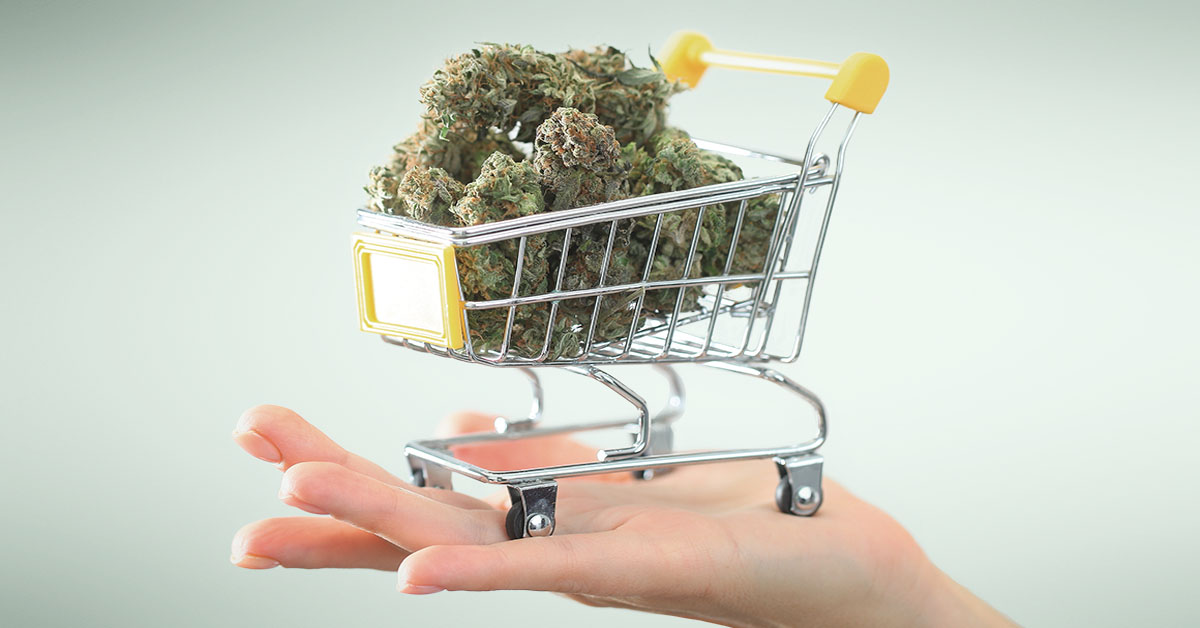In recent years, the U.S. cannabis industry appeared unstoppable. The once-illegal drug gained mainstream support, and sales were booming as more states legalized the product for medical and recreational use. National sales skyrocketed from $3.1 billion in 2015 to $27 billion in 2021, according to marijuana news service MJBizDaily.
The future was just as bright, with hockey-stick-shaped growth continuing for the industry. Sales were expected to nearly double by 2026, reaching more than $52 billion. Cannabis was seen as the newest expanding industry to continue fueling the phenomenal growth for the industrial real estate sector, which delivered a record 450 million square feet of space last year, according to CommercialEdge. Cannabis was expected to absorb some of the new space to fulfill its needs for manufacturing facilities, warehouses and storefronts.
Unfortunately, the plans for filling empty commercial real estate space have gone up in smoke, at least for the near future. Last year, the cannabis industry stumbled into what appears to be a full-blown recession, with a perfect storm of factors that has crippled growers, producers and sellers. The supply of cannabis continues to grow while demand for the product (which peaked early in the COVID-19 pandemic) has dropped, leading to a glut on the market.
“There are a combination of factors hurting the industry, but over-regulation and taxation are the biggest issues, without question.”
– Peter Padden, senior associate, Ascension Advisory
According to cannabis research and analytics company Headset, sales in the U.S. were down 1% between November 2021 and November 2022. Although each state is different in how they handle this nascent industry, prices last year for a pound of marijuana (or “flower” in the industry vernacular) dropped by 30% to 50% in some states. Headset reported that nationwide prices for cannabis flower were down 24% and prices for edibles were down 17% for the year ending this past November. At the same time, regulations and taxes continue to mount, costing everyone in the supply chain more to grow the product, bring it to market and sell it in stores.
“Nationally, all the way back to the first quarter of 2022, we were seeing same-store sales down 20% to 26% across the board,” says Peter Padden, senior associate at Ascension Advisory, a commercial real estate advisor to the cannabis industry. “There are a combination of factors hurting the industry, but over-regulation and taxation are the biggest issues, without question. Part of the reason that the cannabis industry hasn’t been able to grow is because its profits are getting eaten up through really nasty, aggressive taxation and regulations that lead to higher spends on things such as compliance and tenant improvements.”
Of course, that is just the tip of the iceberg when it comes to the industry’s litany of problems. The legal landscape for cannabis continues to evolve. Last year, Missouri and Maryland voted to legalize the recreational use of cannabis, bringing the total number of states where the product is completely legal to 21, plus the District of Columbia. There are 26 states that offer a mix of cannabis legality, allowing for medical marijuana, CBD oil or decriminalization. Only three states ban the use of marijuana completely.
Still, the murky legal rules surrounding the product have led to higher borrowing costs, higher storefront leasing fees and limited banking opportunities, causing stress throughout the production system. Padden says another problem for cannabis companies is that each state has different rules about advertising the product and what medical claims can be made. To make matters worse, the illicit trade can produce high-quality cannabis for half the price of legal operations because it doesn’t have to contend with the regulatory costs.
Adding more financial pressure is the fact that the equity markets have pulled back from funding cannabis companies. Padden says they were spooked in part by the default of California-based Kings Garden, a vertically integrated cannabis company, which failed to pay $2.3 million in rent and other related fees owed to a cannabis-focused real estate investment trust. Padden says some top brands, which were industry all-stars three years ago, went to the capital markets last year to raise $100 million but couldn’t even raise $10 million.
“It’s just because of the pessimism in the marketplace, disagreements over the valuation of companies and the future financial success of a brand,” Padden says. “The debt markets are better than they used to be for this industry. There are more sources of debt than in the past. But even the traditional sources cut off the tap toward the end of last year.”
Steph Woods, director of sales for Headset, says that despite the problems facing the industry, she is confident that growth will continue as the industry normalizes. She believes the current difficulties are part of a “reset” and that the industry isn’t doing as poorly as many believe. Outsized growth during the pandemic helped to skew the industry’s overall numbers. But bringing more experienced businesspeople with different skills to cannabis companies is helping to professionalize the industry.
“The more normalized cannabis becomes in North America, and the addition of people from different industries with specific talents, will help us develop,” Woods says. “And with more states in the legalization process, we are expecting continued expansion in the future.” ●







